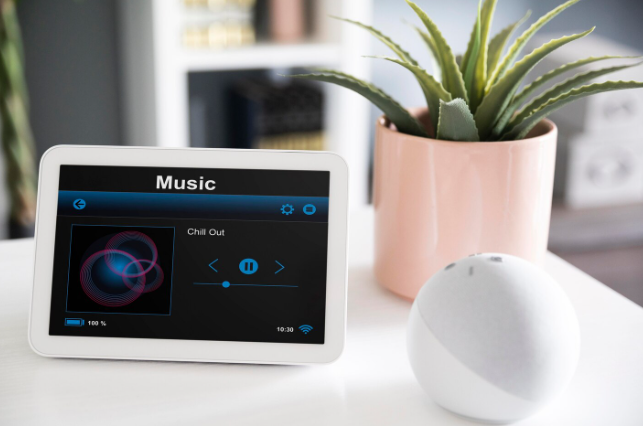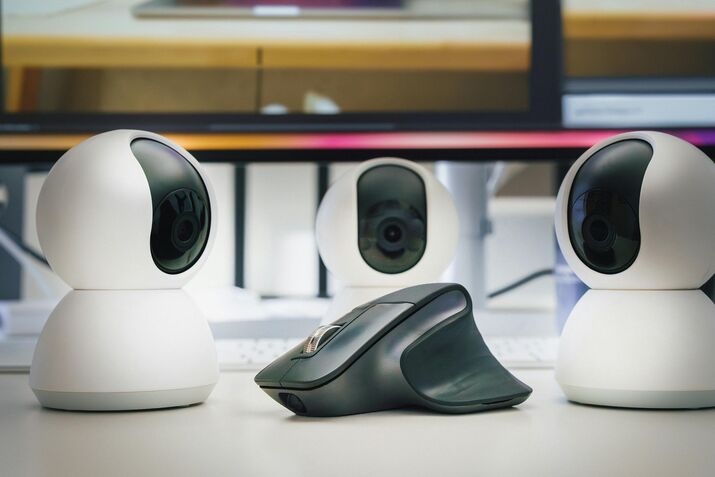The years have witnessed a meteoric rise in smart home devices that enhance one’s comfort, security, and efficiency in American life. From smart lights to voice-controlled systems, these smart devices give an additional touch of interaction rarely felt earlier in the home. As new technologies continue their path of progress, smart home devices increasingly find their way into the lives of modern Americans.
What Are Smart Home Devices?
In simple terms, smart home devices are Internet-connected gadgets that let homeowners monitor, control, and automate daily tasks. From adjusting thermostats and dimming lights to managing security cameras, they simplify mundane chores. Many also integrate with AI assistants like Alexa, Google Assistant, or Siri, enhancing voice control and seamless smart automation for a more modern, convenient home.
Why Homeowners Are Adopting Smart Home Devices in America
OK, so the smart-home concept is huge in America, a sixth-largest economy with an additional aura of convenience. These devices ultimately save on time and effort; they are also energy-efficient while reducing utility bills and increasing homeowner security. For example, smart thermostats such as Nest or Ecobee are designed to automatically adjust the temperature setting in accordance with user behavior, thus helping to conserve energy and money. In the same way, smart locks and security cameras will allow real-time monitoring to instill confidence in a homeowner that the home is a secure environment and give that feeling of being in control.
As more people began working from home, the demand for smart home devices surged during the pandemic. Home offices, entertainment, and connected devices gained recognition, driving exponential market growth. Industry forecasts predict billions in annual sales, indicating a continuing upward trend.
Popular Devices for Homes to Check Out
Anyhow, overall, these are the main smart devices that Americans invest in for convenience, security, and entertainment. Additionally, they continue to explore new gadgets that enhance daily life even further:
Smart Speakers and Voice Assistants
Smart speakers work as the centerpiece for home-device control. For example, voice control can turn on or off the lighting, activate appliances, and stream media. It also sets reminders, gives weather forecasts, or delivers breaking news. Quite simply, it makes life a little easier, a bit more organized, and even a tad more fun to interact with.
Smart Lighting
Smart bulbs and systems, like Philips Hue and LIFX, let users control brightness, colors, and schedules from afar. Lighting gets set differently throughout the day to save energy and set the ambient mood of a room. Also, it integrates with a voice assistant to make it possible to control the light from wherever inside or even outside the house!
Smart Thermostats
Nest and Ecobee-type devices analyze the heating and cooling requirements depending on behavior. Such devices, as they conserve energy, also maintain the comfort of a house. Perhaps the thermostats offer quite granular energy reports and can be operated remotely through smartphone apps, hence making a good fit for convenience and efficiency.
Smart Security Systems
They keep security going 24-7-whether it be smart locks, doorbell cameras, or other surveillance. Ring, Arlo, and SimpliSafe, among others, allow you to know what’s going on back home in real-time and receive instant alerts about any suspicious activity. That brings the added assurance and comfort necessary for families with a busy schedule or those who travel a lot.
Smart Appliances
From fridges and ovens to washing machines and robot vacuums, smart appliances make household chores easier. Most of these machines can be controlled remotely, programmed to perform certain tasks, and integrated with other smart systems. For example, a smart fridge might sound an alert when groceries run low, while a robot vacuum keeps the floor clean automatically, freeing up some extra hands and hours for the human.
Smart Plugs and Outlets
Smart plugs will connect non-smart gadgets to the Internet and facilitate remote control. Just plugging in one of these meant turning a trivial lamp, fan, or coffee maker into a smart thing to operate with more variance and ease. They also present an affordability add-on opportunity for whoever starts with automation.
Home Entertainment Systems
Today, smart homes revolve around intelligent TVs, streaming devices, and audio systems. Via platforms like Roku, Apple TV, and Sonos, users can stream content, voice-control smart devices, and blend entertainment into automated routines. Thus, entertainment becomes an engaging interaction for the user.

Benefits of Smart Home Devices
The advantages of investing in this technology extend beyond convenience. Some key benefits include:
- Energy Efficiency: When lighting, heating, and appliances are automated, they not only consume less energy but, as a result, also help save on utility bills. Additionally, this efficiency contributes to a more sustainable and eco-friendly home.
- Enhanced Security: Moreover, real-time monitoring and instant alerts not only enhance safety but also build peace of mind. In addition, they allow homeowners to respond quickly to any unexpected situation, thereby increasing overall security.
- Convenience: Voice commands and device control from afar make simple work of all tasks.
- Customization: Smart homes adjust to both personal preferences and daily routines.
- Value Addition: Smart home features can increase the subject property’s worth, particularly when appealing to tech-oriented buyers.
The smart home companies do not stop innovating. Such companies constantly add features to their solutions, featuring AI-based prediction and automation of energy and health-monitoring systems. This catapults the customer into an environment where increasingly intricate experiences are not only available but also personalized to their liking. As a result, with the burgeoning technology, these enhancements affirm intelligence and fluidity to your lifestyle.
Future Trends in Smart Home Devices
“The smart home market is very much dynamic with very rapid changes occurring in it in the U. S. Moreover, there is a clear indication for what is to come in this market according to some emerging trends:’
- AI Integration: Making smart devices smarter with the implementation of artificial intelligence (AI) so that they can study patterns to anticipate users’ needs. For example, AI-enabled thermostats would infer the best temperature setting based on the user’s daily routine.
- Intertwined Ecosystems: Contrary to early stand-alone devices, today the focus is on building devices that cooperate to constitute a fully integrated smart home ecosystem.
- Growing Voice Control: Voice assistants are reaching the point of understanding natural language and handling complex commands.
- Sustainable Smart Homes: Eco-friendly devices, energy optimization systems, and green technologies are gaining traction.
- Health and Wellness: These devices that monitor air quality, sleep patterns, and physical activity are emerging as smart-home must-haves.
Simply put, the pursuit of these trends into the future will raise homes wherein the average American will be more convenient and secure, but also increasingly smart and responsive to individual lifestyles.
How to Make the Right Choice in Terms of a Smart Device for Your Home?
Choosing smart home devices is one of the best kinds of decisions to be made after due consideration of your requirements, your budget, and your own systems. Here are some suggestions:
- Compatibility: Check whether devices are compatible with your chosen ecosystem, such as Alexa, Google Home, or Apple HomeKit.
- Security: Choose devices offering strong encryption and security practices, and most importantly, frequent updates on the firmware.
- Small Begin: Start with a few essentials, then expand later.
- Consider Energy Efficiency: Choose devices that save energy and operational costs.
- Read Reviews and Compare: Check expert reviews and user feedback for insights about how a given device performs in real life.
By following these steps, the homeowner will have a smart home to improve his or her lifestyle, without increasing the levels of complexity.
Conclusion
In conclusion, smart home devices are transforming American homes by delivering comfort, security, efficiency, and entertainment. From smart speakers and lighting to AI-powered appliances, these devices are changing the daily living routine. However, with upcoming trends like AI integration, ecosystems with interconnectivity, and health-related devices, the smart home has unveiled some promising prospects.
Investing in smart devices for the home is not about the latest tech trend for the American homeowner; it is a conscious effort to beautify life, conserve energy, and foster an atmosphere wherein autosenses. Whether one is a tech enthusiast or a casual homeowner, putting smart-home devices into the house today is really the first step toward a smarter, efficient, and comfortable home in the future.
